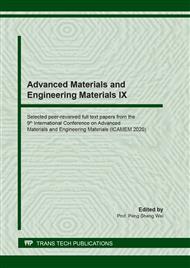p.3
p.9
p.15
p.23
p.28
p.35
p.41
p.46
Microstructure and Mechanical Properties of Laser Butt Welded Laser Powder Bed Fusion Manufactured and Sheet Metal 316L Parts
Abstract:
Laser weldability of dissimilar parts produced with different techniques from 316L material was studied in this paper. Butt joint welding was performed on pairs of sheet metal and parts produced with additive manufacturing by laser powder bed fusion. The effect of heat treatment was also considered and the stage in which it was applied. The experiments showed very good weldability and the results were verified with microstructural analysis and tensile testing with digital image correlation equipment. Microstructures of the welds revealed morphology consisting of equiaxed and columnar grains in somewhat random orientation. Tensile tests showed that the 75% higher yield strength of the printed material compared to sheet metal leads to uneven elongation of the dissimilar joint and the part breaks from the sheet metal side. Hardness measurements showed higher values for the printed side (225 HV) compared to sheet metal side (170 HV). All the welded specimens broke outside of the welds showing a good weldability independent of the heat treatment stage.
Info:
Periodical:
Pages:
9-14
Citation:
Online since:
September 2020
Price:
Сopyright:
© 2020 Trans Tech Publications Ltd. All Rights Reserved
Share:
Citation:


